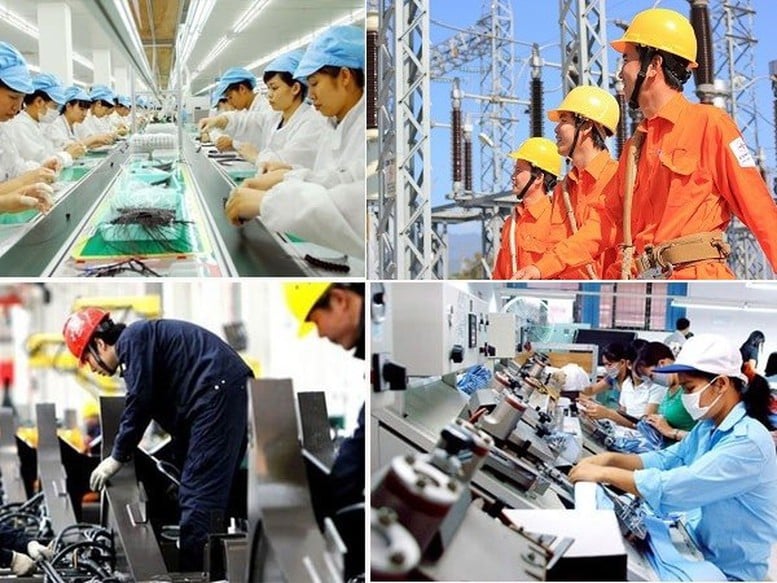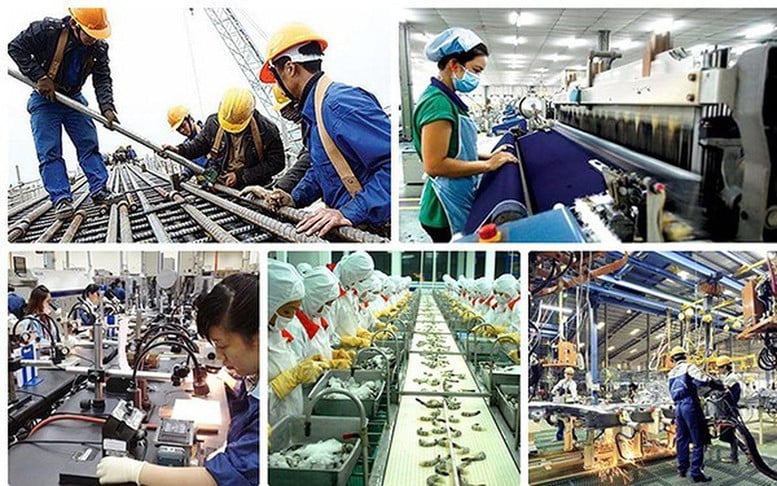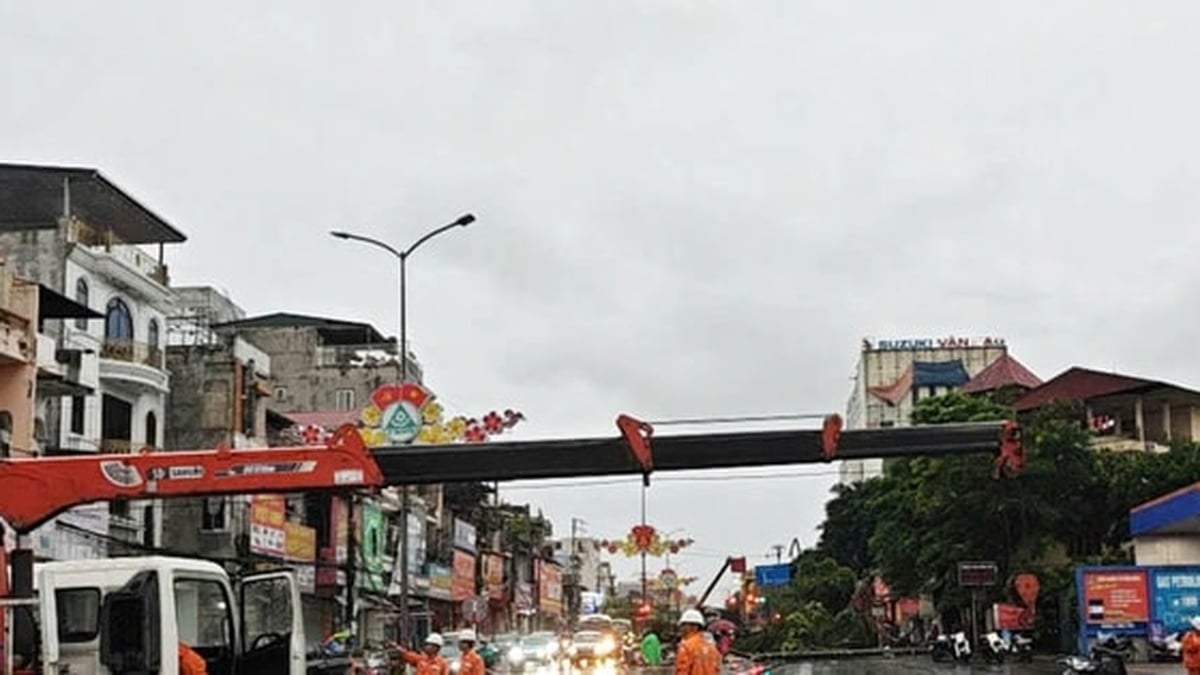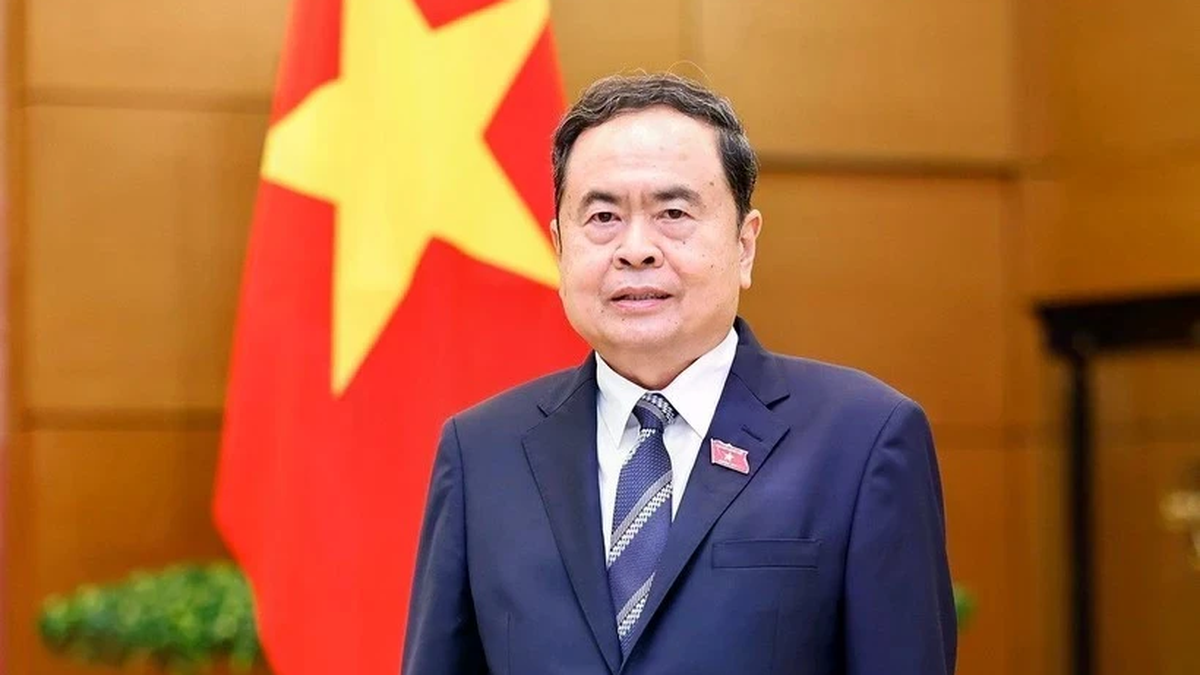
State economy is not only production and business activities, but also the power to coordinate a huge amount of assets that the state is holding.
However, while the role is clearly defined, the concept of state economy is not clear enough and has not been standardized in terms of content and scope.
At the National Conference to disseminate and implement Resolutions 66 and 68 of the Politburo (May 18, 2025 ), General Secretary To Lam pointed out : to develop rapidly and sustainably, it is necessary to transform the growth model based on innovation, science, technology and artificial intelligence. In that spirit, the General Secretary requested the development of a Project to innovate and improve the efficiency of state economic activities , considering this an important component in the process of perfecting development institutions.
To realize that vision, the prerequisite is to establish a clear, coherent and unmistakable conceptual framework - the foundation for correctly positioning roles, designing appropriate institutions and operating effectively in practice.
Why is it necessary to clarify the concept of state economy?
In Vietnam's practice, the concept of "state economy" is often confused with other functions of the State such as macro management, budget allocation or public service provision. This not only distorts perception but also leads to overlapping functions, conflicts of interest and a decline in market nature.
Second, the identification of “State policy-making” with “State economic activity” creates a situation where every area in which the State participates is understood as state economic, from building schools to providing health care. The result is an uncontrolled expansion of this sector, weakening the private sector, increasing the burden on the budget and reducing the incentive for innovation.
Third, while the Party and State are affirming the important role of the private economy as a driving force for development, if the concept of the state economy is unclear and has no reasonable limits, we can easily fall into a situation where "everyone goes the same way", and in the end there is no truly equal playing field for anyone.
As Prime Minister Pham Minh Chinh has repeatedly emphasized , developing a socialist-oriented market economy must "harmonize economic components, not criminalize economic and civil relations", while creating a healthy competitive environment and encouraging innovation in both the state and private sectors . To do that, accurately identifying the state economy is a prerequisite , so as not to expand arbitrarily and not to overwhelm dynamic forces in the economy.
Clarifying the conceptual framework of state economy
Based on the synthesis of international theory and experience, the author believes that a basic concept can be established as follows:
This concept clarifies three core elements:
1. The state is a market player, not an arbitrator or policy maker;
2. The goal is not only financial efficiency but also linked to quantifiable social goals;
3. Activities must comply with market rules, no subsidies, no privileges, no benefits.
From this concept, it is easy to distinguish the state economy from non-market functions of the state, such as:
- Providing public services: public education, public health, national defense, security... This is a function of welfare distribution, not state economy;
- Budget allocation: by location, field, social policy... This is a macro-regulation tool;
- Economic management: policy making, market regulation. This is the role of the state as a creator.

It is necessary to establish a clear, coherent and unambiguous conceptual framework on the state economy.
State economy from the perspective of ownership and coordination of national assets
A new point that needs to be emphasized and added to the theoretical framework: the state economy is not only a production and business activity, but also the power to coordinate a huge amount of assets that the state is holding.
These are: capital, strategic shares, public land, infrastructure, natural resources, big data… When combined, this is the largest national balance sheet in the entire economy.
If that asset is operated with a local administrative mindset – asking for and giving – it will hinder the market. But if it is managed as a strategic investment portfolio – convertible, recoverable, ordered, public-private partnership… it will become a great lever for innovation in growth models, high-tech development and increasing productivity of the entire economy.
This is the underlying reason why the state economy plays a leading role: not because it produces the most, but because it holds the largest assets and can best coordinate strategic development – if properly institutionalized .
Unclear concept – leading role difficult to realize
When the Constitution affirms that the state economy plays a leading role, it is not only a political and legal affirmation, but also a strategic orientation that needs to be concretized by appropriate institutions, policies and organizational designs. However, if the concept of the state economy has not been clearly and coherently established and has clear boundaries with other functions of the state, then that leading role will be difficult to implement in a substantial and effective manner.
In reality, due to the vague concept, the state economy is often misunderstood or identified with the functions of macro-regulation, budget allocation or provision of public services such as education, health, national defense, etc. As a result, the scope of the state economy is enlarged in form but the strategic content is not commensurate; the private sector lacks space for development; effective monitoring mechanisms and evaluation of the leading role become impossible.
Only when the state economy is precisely defined – that is, clearly identifying the state as a market entity, investing, producing, and doing business with the goal of creating value and subject to market discipline – can we design mechanisms to implement the leading role in a systematic, transparent, and effective manner. The leading role will then no longer exist in name, but will be demonstrated through specific factors:
1. Economic sectors in which the state proactively invests to lead;
2. Strategic public assets are held, coordinated and used effectively by the state;
2. Market mechanisms that the state economy must comply with to ensure fair competition;
4. And institutional tools to monitor and evaluate operational efficiency in line with national development goals.
The right concept - the starting point for reform
Only by defining the boundaries between state economy and state management, between profitable investment activities and public welfare provision, between administrative allocation and national asset management, can we redesign institutions correctly, effectively and efficiently.
Conceptualization is the starting point of reform, the foundation for innovative thinking, the basis for restructuring the state economic sector, unleashing market dynamics and rebuilding trust among economic sectors. It is the prerequisite for the leading role of the state economy to no longer be a political slogan – but to become a practical capacity for creating development.
As General Secretary To Lam emphasized: "We cannot let the country fall behind. We cannot let the nation lose opportunities. We cannot let the cycles of history repeat themselves." Clarifying the concept of the state economy is one of the breakthroughs to escape that cycle and open a new cycle of development that is more sustainable, fairer and more prosperous.
Dr. Nguyen Si Dung
Source: https://baochinhphu.vn/nhan-thuc-ro-ve-kinh-te-nha-nuoc-tu-khai-niem-toi-thuc-tien-10225072006250782.htm
























![[Photo] National Assembly Chairman Tran Thanh Man visits Vietnamese Heroic Mother Ta Thi Tran](https://vphoto.vietnam.vn/thumb/1200x675/vietnam/resource/IMAGE/2025/7/20/765c0bd057dd44ad83ab89fe0255b783)











































































Comment (0)